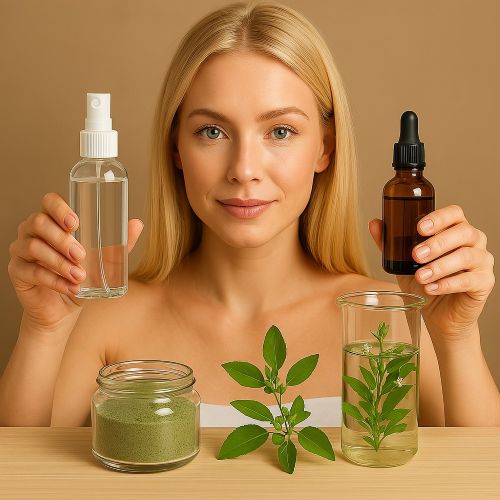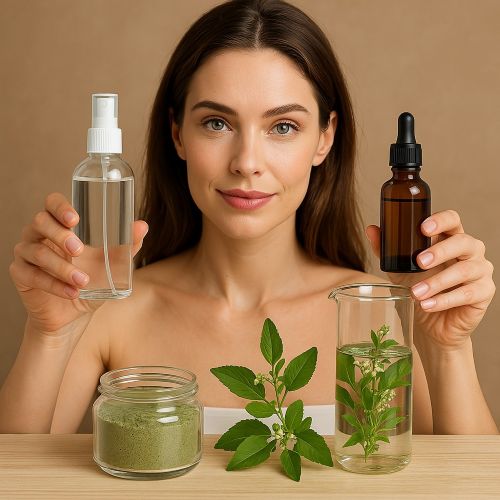-
 DIY: Video master classes
DIY: Video master classes
-
 Aromatherapy
Aromatherapy
-
 Felting master classes
Felting master classes
-
 Eating at home
Eating at home
-
 DIY cosmetics for children
DIY cosmetics for children
-
 Cooking recipes
Cooking recipes
-
 Detergents, cleaning products with your own hands
Detergents, cleaning products with your own hands
-
 Soap making as a business
Soap making as a business
-
 Natural cosmetics. Raw materials for cosmetics and soap.
Natural cosmetics. Raw materials for cosmetics and soap.
-
 Natural oils in cosmetics
Natural oils in cosmetics
-
 News
News
-
 Recipes for balms and conditioners
Recipes for balms and conditioners
-
 Bath Bomb Recipes
Bath Bomb Recipes
-
 Cream recipes. Cream making.
Cream recipes. Cream making.
-
 Lotion recipes. Gel recipes.
Lotion recipes. Gel recipes.
-
 Mask recipes
Mask recipes
-
 Soap recipes. Base soap. Soap from scratch.
Soap recipes. Base soap. Soap from scratch.
-
 Recipes for all occasions
Recipes for all occasions
-
 Natural shampoo recipes
Natural shampoo recipes
-
 Healthy Nutrition Recipes
Healthy Nutrition Recipes
-
 Scrub recipes. Massage tiles. Ubtan
Scrub recipes. Massage tiles. Ubtan
-
 DIY candles
DIY candles
-
 Reference materials, questions, tips
Reference materials, questions, tips
-
 Startup - soap production
Startup - soap production
-
 Hair care. Tips, recipes
Hair care. Tips, recipes
-
 Facial skin care. Cleansers.
Facial skin care. Cleansers.
-
 Body care. Tips, recipes
Body care. Tips, recipes
-
 Photo Reviews
Photo Reviews
-
 Chocolate Handmade
Chocolate Handmade
What is the difference between hydrolates and extracts comparison in cosmetic production
 In the world of natural skincare, plants are the undisputed powerhouses, offering a wealth of benefits for the skin. However, when it comes to harnessing these benefits, not all plant-based ingredients are created equal. The two most common and often confused forms are hydrolats and extracts. While both are derived from plants and contain therapeutic compounds, their production methods, chemical compositions, and applications are fundamentally different. Understanding this distinction is key to creating truly effective homemade cosmetics. This article will break down these differences, explore their unique properties, and provide three detailed recipes demonstrating how to use them to elevate your homemade skincare routine.
In the world of natural skincare, plants are the undisputed powerhouses, offering a wealth of benefits for the skin. However, when it comes to harnessing these benefits, not all plant-based ingredients are created equal. The two most common and often confused forms are hydrolats and extracts. While both are derived from plants and contain therapeutic compounds, their production methods, chemical compositions, and applications are fundamentally different. Understanding this distinction is key to creating truly effective homemade cosmetics. This article will break down these differences, explore their unique properties, and provide three detailed recipes demonstrating how to use them to elevate your homemade skincare routine.
What Are Hydrolats? The Gentle Spirit of the Plant
A hydrolat, also known as floral water, hydrosol, or distilled water, is the pure, aromatic water that remains after a plant has been steam distilled to produce essential oil. During this process, steam passes through the plant material, carrying volatile aromatic compounds and some water-soluble molecules with it. As the steam cools and condenses back into liquid, it separates into essential oil (which floats on top) and hydrolat.
Hydrolats are much less concentrated than essential oils. They carry the water-soluble compounds of the plant, including some acids and trace elements, giving them a subtle scent and unique therapeutic properties. They are gentle, safe for direct skin application, and are excellent as a base for toners, face mists, and light serums.
What Are Plant Extracts? The Concentrated Essence
A plant extract is a highly concentrated preparation made by soaking plant material in a specific solvent. The purpose is to pull out the desired active compounds. The nature of the extract depends entirely on the solvent used:
-
Aqueous Extracts: Use water as the solvent, pulling out water-soluble compounds like vitamins, minerals, and tannins.
-
Glycerin Extracts: Use vegetable glycerin, which is excellent at extracting both water-soluble and some oil-soluble compounds, while also providing moisturizing properties.
-
Oil-based Extracts (Infusions): Use a carrier oil (like jojoba, olive, or sunflower oil) to extract fat-soluble compounds such as antioxidants, carotenoids, and some vitamins.
Extracts are far more potent than hydrolats and are typically used in small percentages (usually 1-5%) as the "active" ingredient in a cosmetic formula.
Hydrolats vs. Extracts: A Head-to-Head Comparison
The differences between these two plant-based ingredients are clear and crucial for cosmetic formulation.
Preparation Method: Hydrolats are a by-product of steam distillation. Extracts are the result of a deliberate maceration or infusion process.
Chemical Composition: Hydrolats contain only the water-soluble and a few volatile compounds from the plant. Extracts, depending on the solvent, can contain a wider spectrum of compounds, including fat-soluble vitamins, concentrated antioxidants, and other potent bio-actives.
Potency and Concentration: Hydrolats are gentle and dilute. They are the "whole water" of the plant. Extracts are highly concentrated and should be used sparingly. A few drops of an extract can be equivalent to a large amount of raw plant material.
Application in Formulas: Hydrolats are primarily used as the base or the primary water phase of a product. Extracts are used as an active or functional ingredient, much like a peptide or a vitamin.
Advantages of Using Hydrolats and Extracts in Homemade Cosmetics
Choosing to work with these natural ingredients offers significant benefits over relying on industrial counterparts.
-
Full Ingredient Control: You know every single component that goes into your product. You can avoid cheap fillers, synthetic fragrances, and questionable additives.
-
Unmatched Purity and Freshness: Commercially available products may sit on a shelf for months or years. Your homemade products are fresh, ensuring the active compounds retain their full potency and effectiveness.
-
Customization for Your Skin: You can select a hydrolat and an extract specifically for your skin's unique needs. For example, a lavender hydrolat for soothing and a chamomile extract for calming, creating a formula perfectly tailored to sensitive skin.
-
Cost-Effectiveness: While the initial investment in high-quality raw materials may seem higher, the cost per use is often significantly lower than that of commercial natural skincare products.
-
Environmental Benefits: You reduce packaging waste by reusing bottles and purchasing ingredients in bulk.
Three Detailed Recipes for Using Hydrolats and Extracts
Here are three examples demonstrating how to incorporate these powerful plant ingredients into your homemade skincare. Remember to always use a cosmetic-grade preservative for any recipe containing a water-based component to ensure safety and stability.
Recipe 1: Soothing Hydrolat Face Mist
This recipe uses a hydrolat as the main ingredient for a simple, refreshing, and calming mist.
-
Weigh out your ingredients. In a sterilized beaker, weigh 45 grams of Chamomile Hydrolat, 45 grams of Lavender Hydrolat, and 1 gram of glycerin.
-
Add the preservative. Add 0.5 grams of a broad-spectrum preservative like Geogard 221 (Cosgard) or Euxyl PE 9010.
-
Stir the mixture. Use a sterilized glass stirring rod to gently stir the ingredients until fully combined.
-
Pour into a spray bottle. Carefully pour the finished mist into a sterilized spray bottle.
Recommendations for Use: Spritz onto a clean face to tone the skin after cleansing. Use throughout the day to refresh and hydrate the skin. This is also excellent for calming skin after sun exposure.
Storage: Store in a cool, dark place. The shelf life is typically 3 to 6 months with a preservative.
Recipe 2: Nourishing Oil-Based Herbal Extract Serum
This formula uses an oil-based extract as a key active ingredient in a moisturizing facial serum. This recipe does not contain water, so a preservative is not needed.
-
Weigh your carrier oils. In a sterilized beaker, weigh 20 grams of Jojoba Oil and 20 grams of Rosehip Oil.
-
Add the extracts. Add 5 grams of a Calendula Oil Extract and 5 grams of a Green Tea Oil Extract to the oils.
-
Stir until combined. Use a sterilized glass stirring rod to gently mix all the ingredients.
-
Add Vitamin E. Add 0.5 grams of Vitamin E (Tocopherol) to act as an antioxidant, protecting the oils from rancidity.
-
Pour into a dropper bottle. Carefully transfer the finished serum into a sterilized amber or opaque dropper bottle to protect it from light.
Recommendations for Use: Apply a few drops of the serum to a clean, slightly damp face. Gently pat into the skin. This is perfect for evening use to nourish and restore the skin.
Storage: Store in a cool, dark place. The shelf life is typically 6 to 12 months, as Vitamin E helps to protect the oils.
Recipe 3: Balancing Hydrolat & Extract Emulsion Lotion
This recipe combines the best of both worlds, using a hydrolat as a base and an extract as a potent active in a light, balancing lotion.
-
Weigh and heat water and oil phases. In a beaker for the water phase, weigh 40 grams of Lavender Hydrolat and 3 grams of Vegetable Glycerin. In a separate beaker for the oil phase, weigh 5 grams of an emulsifier (like Olivem 1000 or Montanov 68) and 10 grams of Grapeseed Oil. Heat both beakers on a double boiler to 75°C.
-
Combine phases and mix. Once both phases reach the target temperature, carefully pour the water phase into the oil phase. Immediately use a handheld mini-mixer to mix vigorously for 2 to 3 minutes until a white, uniform emulsion forms.
-
Allow to cool. Continue stirring occasionally as the emulsion cools.
-
Add the extracts and preservative. Once the lotion has cooled to below 40°C, add 1.5 grams of a Licorice Root Glycerin Extract, 1 gram of Panthenol (Vitamin B5), and 0.5 grams of a broad-spectrum preservative.
-
Transfer to a container. Stir one last time to ensure everything is combined. Transfer the finished lotion into a sterilized jar or pump bottle.
 Recommendations for Use:
Apply a small amount to your face after cleansing. This lotion is light enough for morning use and provides balanced hydration.
Recommendations for Use:
Apply a small amount to your face after cleansing. This lotion is light enough for morning use and provides balanced hydration.
Storage: Store in a cool, dark place. The shelf life is typically 3 to 6 months with a preservative.
Conclusion: The Power of Natural Ingredients in Your Hands
Understanding the fundamental differences between hydrolats and extracts is a powerful step in mastering homemade cosmetic formulation. While hydrolats offer the gentle, full-bodied essence of a plant as a versatile base, extracts provide a concentrated dose of targeted active compounds. By combining these two categories of ingredients with precision and a commitment to hygiene, you can create natural, effective, and highly personalized skincare products that stand apart from their commercial counterparts.
Mylo Opt Cosmetics Blog – Your Reliable Guide to Beauty and Care
Welcome to the Mylo Opt cosmetics blog! Here, you will find valuable advice, interesting recipes, and professional recommendations for creating soap, cosmetics, and candles with your own hands. Our blog is designed for anyone passionate about natural cosmetics, looking for new ideas, and wanting to learn more about producing high-quality skincare and haircare products. We share tested recipes, useful tips, and the latest news from the world of cosmetics.
Why Choose the Mylo Opt Cosmetics Blog?
Mylo Opt is not just an online store; it is a community of people passionate about creating natural cosmetics. Here are a few reasons why our blog will be useful to you:
- Experience and Expertise: Our authors are experienced cosmetologists, soap makers, and aromatherapy specialists. We share reliable and tested recipes that have undergone thorough testing and received positive feedback.
- Credibility and Authority: We ensure that all information in our blog is up-to-date and reliable. We reference scientific research and verified sources so that you can trust the quality of the information provided.
- Reader-Focused: Our content is tailored to you – our readers. We strive to answer your questions, solve your problems, and inspire new achievements in the world of natural cosmetics.
Popular Products from the Mylo Opt Online Store
Before we move on to recipes and tips, let us introduce you to the most popular products from our online store, which will help you create high-quality and natural cosmetics:
- Soap Bases: High-quality soap bases allow you to create beautiful and beneficial handmade soaps. We offer glycerin bases, bases with added oils and extracts, as well as transparent and white bases.
- Fragrance Oils and Fragrances: Give your products a unique scent with our fragrance oils and fragrances. We offer a wide range of scents – from fresh and floral to spicy and woody.
- Essential Oils: Essential oils are natural components that not only add fragrance to products but also offer beneficial properties for the skin and hair. Our range includes lavender, mint, eucalyptus, lemon, and many other oils.
- Active Ingredients: Vitamins, antioxidants, hyaluronic acid, and other active ingredients help improve the properties of your cosmetics. We offer only tested and high-quality components.
- Pigments and Dyes: Give your products bright and lasting colors with our pigments and dyes. They are safe for the skin and suitable for use in soap, cosmetics, and candles.
- Emulsifiers and Thickeners: To create creams and lotions, you will need emulsifiers and thickeners. We offer quality ingredients that help you achieve the desired consistency and stability of the product.
- Soap and Candle Molds: Create unique items with our soap and candle molds. Our range includes molds of various sizes and designs.
- Everything for Candles: Wax, wicks, fragrances, and dyes for candles – we have everything you need to create beautiful and fragrant candles.
Recipes and Tips for Making Handmade Soap
Cold Process Soap for Beginners
Making cold process soap is an exciting process that allows you to control all the ingredients and create unique recipes. Here is one simple cold process soap recipe for beginners:
Ingredients:
- 500 g olive oil
- 300 g coconut oil
- 200 g palm oil
- 150 g castor oil
- 120 g lye (sodium hydroxide)
- 300 ml distilled water
- Essential oils (lavender, mint, eucalyptus)
- Pigments or natural dyes (optional)
Process:
- Prepare all ingredients and tools. Always use protective gloves and goggles, as lye can be dangerous.
- Weigh the lye and water. Slowly add the lye to the water, stirring until it fully dissolves. Allow the mixture to cool to 40-45°C.
- Weigh the oils and melt them in a water bath. When the oils and lye solution reach the same temperature (about 40-45°C), slowly pour the lye into the oils, stirring constantly.
- Use an immersion blender to mix until trace (when the mixture thickens and leaves a trail when stirred).
- Add essential oils and pigments if desired. Mix thoroughly.
- Pour the mixture into a prepared mold and cover with a towel. Let the soap harden for 24-48 hours.
- Remove the soap from the mold and cut it into bars. Allow the soap to cure for 4-6 weeks before use.
Homemade Cosmetics Recipes
DIY Moisturizing Cream
Creating a moisturizing cream at home allows you to control the ingredients and adapt the recipe to your needs. Here is a simple recipe for a moisturizing cream:
Ingredients:
- 50 ml rose water
- 50 ml distilled water
- 10 g emulsifier (e.g., Olivem 1000)
- 10 ml jojoba oil
- 5 ml avocado oil
- 5 drops lavender essential oil
- 2 drops tea tree essential oil
Process:
- Weigh all the ingredients.
- In a water bath, melt the emulsifier with the oils until smooth.
- Separately, heat the water phase (rose water and distilled water) to the same temperature as the oil phase.
- Slowly pour the water phase into the oil phase, stirring constantly.
- Use an immersion blender to emulsify until you achieve a creamy consistency.
- Add essential oils and mix thoroughly.
- Pour the cream into a sterilized jar and allow it to cool.
DIY Candle Recipes
Aromatic Soy Candle
Creating aromatic candles is a creative process that allows you to experiment with scents and designs. Here is a simple recipe for a soy candle:
Ingredients:
- 200 g soy wax
- 20 ml fragrance oil (e.g., vanilla or lavender)
- Wick for candles
- Dyes (optional)
- Glass or metal candle mold
Process:
- Melt the soy wax in a water bath until liquid.
- Add the fragrance oil and dyes if desired. Mix thoroughly.
- Secure the wick in the center of the candle mold.
- Slowly pour the melted wax into the mold, holding the wick.
- Allow the candle to fully harden (about 24 hours).
- Trim the wick to the desired length and enjoy your aromatic candle.
Tips for Beginners in Cream Making
- Learn the Basics: Before starting to create creams, it is important to learn the basic principles and ingredients used in cream making.
- Experiment with Formulas: Do not be afraid to experiment with different ingredients and proportions to find the perfect formula for your skin.
- Use Quality Ingredients: The effectiveness and safety of your product depend on the quality of the ingredients. Always choose tested and natural components.
- Maintain Hygiene: It is important to maintain cleanliness and sterility when creating cosmetics to avoid contamination and spoilage of the product.
- Start with Simple Recipes: For beginners, it is best to start with simple recipes to master the basic techniques and principles of cream making.
Conclusion
Our Mylo Opt cosmetics blog is your reliable source of information and inspiration in the world of natural cosmetics. We share useful tips, tested recipes, and the latest news to help you create quality and effective products for skin, hair, and home care. Subscribe to our blog, follow the updates, and discover new opportunities in the world of natural cosmetics with Mylo Opt!





